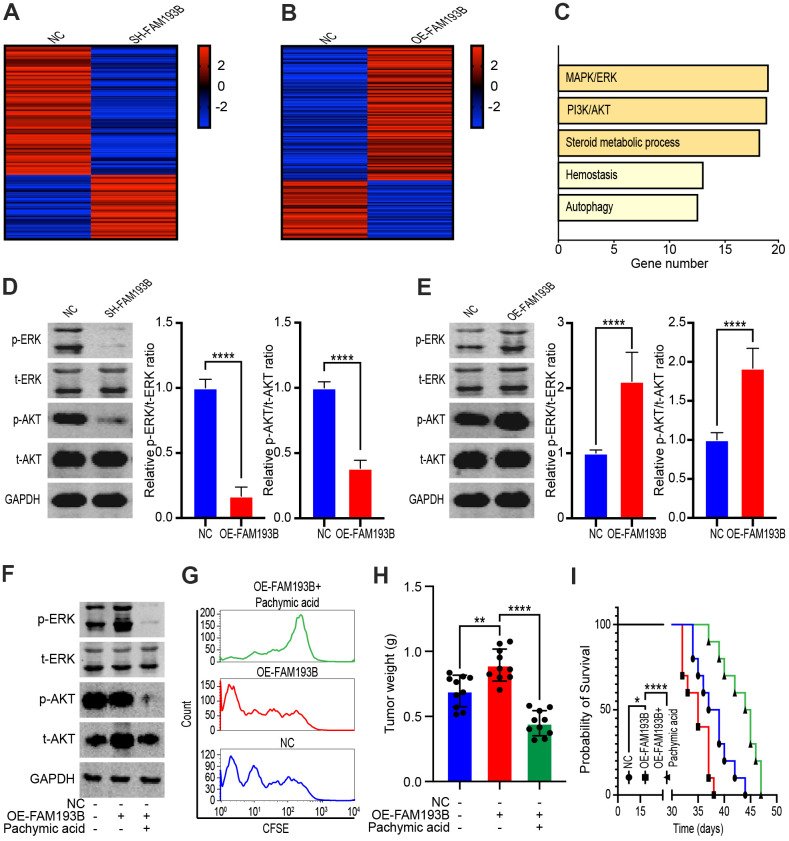Figure 7.
FAM193B promoted ccRCC proliferation by activating the MAPK/ERK and PI3K/AKT pathways. (A, B) Heatmap of differentially expressed genes in DU 145 transfected with SH-FAM193B lentivirus (A) or OE-FAM193B lentivirus (B) compared with empty lentivirus vector-transfected cells. (C) Gene enrichment analysis of differentially expressed genes regulated by FAM193B. D, E. The Caki-1 cells were treated with SH-FAM193B lentivirus (D) or OE-FAM193B lentivirus (E), and cell lysates were then subjected to western blot analysis to determine the levels of phosphor-ERK (p-ERK), total ERK (t-ERK), phosphor-AKT (p-AKT), and total AKT (t-AKT) compared with those in cells treated with empty lentivirus vector. (F) The levels of phosphor-ERK (p-ERK), total ERK (t-ERK), phosphor-AKT (p-AKT), and total AKT (t-AKT) in Caki-1 cells treated with OE-FAM193B lentivirus and/or PA compared with those in empty lentivirus vector-treated cells. (G) Fluorescence attenuation in CFSE-labeled-Caki-1 cells following OE-FAM193B lentivirus and/or PA treatment for 48 hours compared with that in empty lentivirus vector-treated cells. (H) Tumor weight of ccRCC xenograft models harboring tumors generated by cells treated with OE-FAM193B lentivirus and/or PA for 30 days compared with those in mice harboring tumors generated by empty lentivirus vector-transfected cells. (I) Survival time of ccRCC xenograft models. Mean ± SEM, ****P < 0.001.

